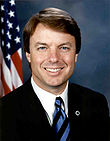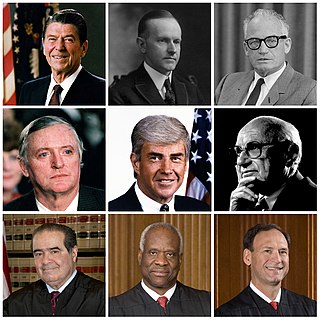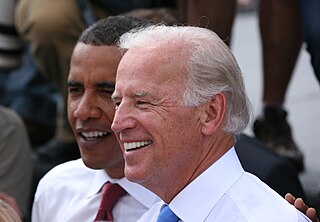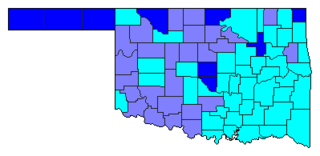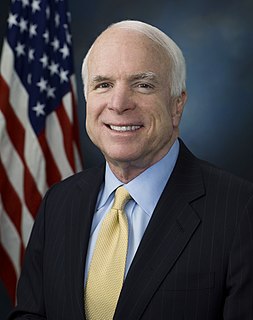This article needs additional citations for verification .(April 2008) (Learn how and when to remove this template message) |

Four Trials is a book by former U.S. Senator John Edwards of North Carolina and his co-writer, John Auchard. The book was published by Simon & Schuster in December 2003, before Edwards unsuccessfully ran for the Democratic Party presidential nomination and, later, vice president on the Democratic Party ticket with fellow Senator John Kerry of Massachusetts in the 2004 presidential election.

As a physical object, a book is a stack of usually rectangular pages oriented with one edge tied, sewn, or otherwise fixed together and then bound to the flexible spine of a protective cover of heavier, relatively inflexible material. The technical term for this physical arrangement is codex. In the history of hand-held physical supports for extended written compositions or records, the codex replaces its immediate predecessor, the scroll. A single sheet in a codex is a leaf, and each side of a leaf is a page.
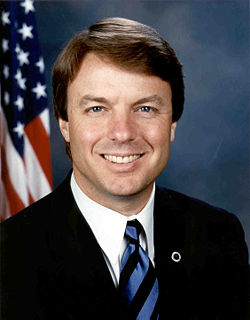
Johnny Reid "John" Edwards is an American lawyer and former politician who served as a U.S. Senator from North Carolina. He was the Democratic nominee for Vice President in 2004, and was a candidate for the Democratic presidential nomination in 2004 and 2008.

North Carolina is a state located in the southeastern region of the United States. North Carolina is the 28th largest and 9th-most populous of the 50 United States. North Carolina is bordered by Virginia to the north, the Atlantic Ocean to the east, Georgia and South Carolina to the south, and Tennessee to the west. Raleigh is the state's capital and Charlotte is its largest city. The Charlotte metropolitan area, with an estimated population of 2,569,213 in 2018, is the most populous metropolitan area in North Carolina and the 23rd-most populous in the United States and the largest banking center in the nation after New York City. North Carolina's second largest metropolitan area is the Research Triangle, which is home to the largest research park in the United States.
The book is autobiographical in nature and relates the story of four civil trials where Edwards acted as an attorney for people seeking damages (petitioners) against large institutions and insurance companies (respondents). Interspersing the stories of each trial are remembrances from Edwards's childhood, time at the University of North Carolina School of Law, and meeting his wife, Elizabeth Anania Edwards. Edwards also wrote about his children (including Wade, his teenage son who died in a car accident).

An autobiography is a self-written account of the life of oneself. The word "autobiography" was first used deprecatingly by William Taylor in 1797 in the English periodical The Monthly Review, when he suggested the word as a hybrid, but condemned it as "pedantic". However, its next recorded use was in its present sense, by Robert Southey in 1809. Despite only being named early in the nineteenth century, first-person autobiographical writing originates in antiquity. Roy Pascal differentiates autobiography from the periodic self-reflective mode of journal or diary writing by noting that "[autobiography] is a review of a life from a particular moment in time, while the diary, however reflective it may be, moves through a series of moments in time". Autobiography thus takes stock of the autobiographer's life from the moment of composition. While biographers generally rely on a wide variety of documents and viewpoints, autobiography may be based entirely on the writer's memory. The memoir form is closely associated with autobiography but it tends, as Pascal claims, to focus less on the self and more on others during the autobiographer's review of his or her life.
Civil law is a branch of the law. In common law legal systems such as England and Wales, the law of Pakistan and the law of the United States, the term refers to non-criminal law. The law relating to civil wrongs and quasi-contracts is part of the civil law, as is law of property. Civil law may, like criminal law, be divided into substantive law and procedural law. The rights and duties of persons amongst themselves is the primary concern of civil law. It is often suggested that civil proceedings are taken for the purpose of obtaining compensation for injury, and may thus be distinguished from criminal proceedings, whose purpose is to inflict punishment. However, exemplary damages or punitive damages may be awarded in civil proceedings. It was also formerly possible for common informers to sue for a penalty in civil proceedings.
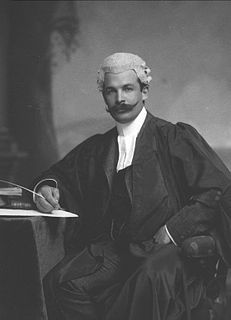
A lawyer or attorney is a person who practices law, as an advocate, attorney, attorney at law, barrister, barrister-at-law, bar-at-law, canonist, canon lawyer, civil law notary, counsel, counselor, counsellor, solicitor, legal executive, or public servant preparing, interpreting and applying law, but not as a paralegal or charter executive secretary. Working as a lawyer involves the practical application of abstract legal theories and knowledge to solve specific individualized problems, or to advance the interests of those who hire lawyers to perform legal services.
The four trials are covered in four chapters: "E.G." (an alcoholic who was treated by an aggressive aversion therapy that caused coma and brain damage), "Jennifer" (a woman whose child had serious injuries because her obstetrician didn't perform a Cesarean section), "Josh" (a young child whose parents were killed in a car crash by a speeding truck driver who was paid by the number of miles he drove), and Valerie Lakey (a girl, age five, who was seriously injured by a swimming pool drain due to a faulty design).
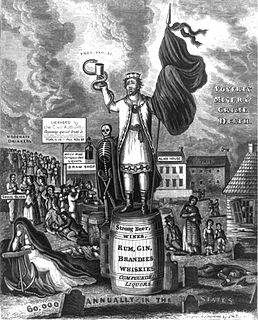
Alcoholism, also known as alcohol use disorder (AUD), is a broad term for any drinking of alcohol that results in mental or physical health problems. The disorder was previously divided into two types: alcohol abuse and alcohol dependence. In a medical context, alcoholism is said to exist when two or more of the following conditions are present: a person drinks large amounts of alcohol over a long time period, has difficulty cutting down, acquiring and drinking alcohol takes up a great deal of time, alcohol is strongly desired, usage results in not fulfilling responsibilities, usage results in social problems, usage results in health problems, usage results in risky situations, withdrawal occurs when stopping, and alcohol tolerance has occurred with use. Risky situations include drinking and driving or having unsafe sex, among other things. Alcohol use can affect all parts of the body, but it particularly affects the brain, heart, liver, pancreas and immune system. This can result in mental illness, Wernicke–Korsakoff syndrome, irregular heartbeat, an impaired immune response, liver cirrhosis and increased cancer risk, among other diseases. Drinking during pregnancy can cause damage to the baby resulting in fetal alcohol spectrum disorders. Women are generally more sensitive than men to the harmful physical and mental effects of alcohol.
Aversion therapy is a form of psychological treatment in which the patient is exposed to a stimulus while simultaneously being subjected to some form of discomfort. This conditioning is intended to cause the patient to associate the stimulus with unpleasant sensations with the intention of quelling the targeted behavior.
A coma is a deep state of prolonged unconsciousness in which a person cannot be awakened; fails to respond normally to painful stimuli, light, or sound; lacks a normal wake-sleep cycle; and does not initiate voluntary actions. Coma patients exhibit a complete absence of wakefulness and are unable to consciously feel, speak or move. Comas can be derived by natural causes, or can be medically induced.
